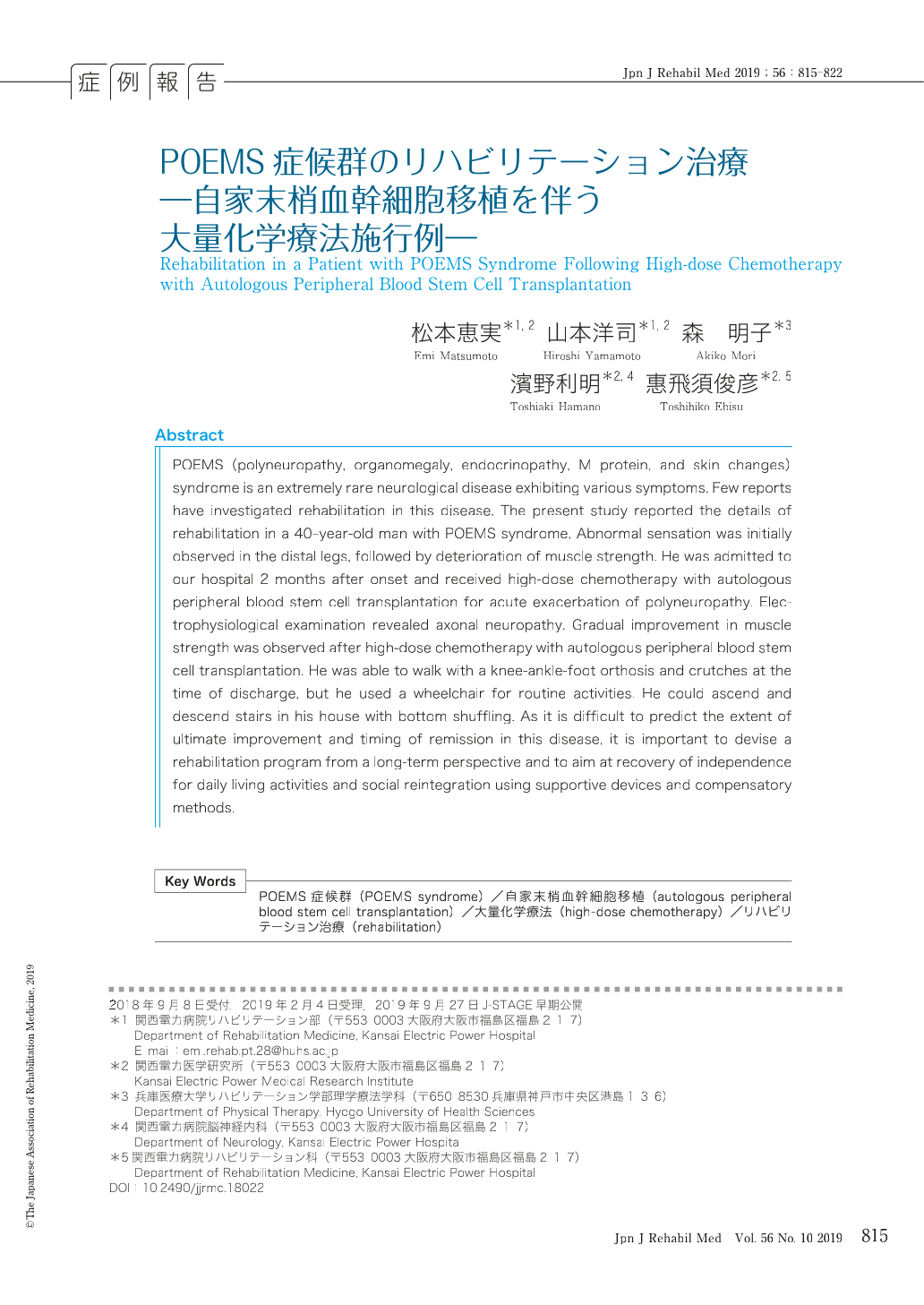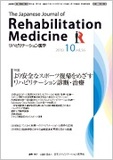Japanese
English
- 販売していません
- Abstract 文献概要
- 1ページ目 Look Inside
- 参考文献 Reference
POEMS (polyneuropathy, organomegaly, endocrinopathy, M protein, and skin changes) syndrome is an extremely rare neurological disease exhibiting various symptoms. Few reports have investigated rehabilitation in this disease. The present study reported the details of rehabilitation in a 40-year-old man with POEMS syndrome. Abnormal sensation was initially observed in the distal legs, followed by deterioration of muscle strength. He was admitted to our hospital 2 months after onset and received high-dose chemotherapy with autologous peripheral blood stem cell transplantation for acute exacerbation of polyneuropathy. Electrophysiological examination revealed axonal neuropathy. Gradual improvement in muscle strength was observed after high-dose chemotherapy with autologous peripheral blood stem cell transplantation. He was able to walk with a knee-ankle-foot orthosis and crutches at the time of discharge, but he used a wheelchair for routine activities. He could ascend and descend stairs in his house with bottom shuffling. As it is difficult to predict the extent of ultimate improvement and timing of remission in this disease, it is important to devise a rehabilitation program from a long-term perspective and to aim at recovery of independence for daily living activities and social reintegration using supportive devices and compensatory methods.
Abstract POEMS (polyneuropathy, organomegaly, endocrinopathy, M protein, and skin changes) syndrome is an extremely rare neurological disease exhibiting various symptoms. Few reports have investigated rehabilitation in this disease. The present study reported the details of rehabilitation in a 40-year-old man with POEMS syndrome. Abnormal sensation was initially observed in the distal legs, followed by deterioration of muscle strength. He was admitted to our hospital 2 months after onset and received high-dose chemotherapy with autologous peripheral blood stem cell transplantation for acute exacerbation of polyneuropathy. Electrophysiological examination revealed axonal neuropathy. Gradual improvement in muscle strength was observed after high-dose chemotherapy with autologous peripheral blood stem cell transplantation. He was able to walk with a knee-ankle-foot orthosis and crutches at the time of discharge, but he used a wheelchair for routine activities. He could ascend and descend stairs in his house with bottom shuffling. As it is difficult to predict the extent of ultimate improvement and timing of remission in this disease, it is important to devise a rehabilitation program from a long-term perspective and to aim at recovery of independence for daily living activities and social reintegration using supportive devices and compensatory methods.

Copyright © 2019, The Japanese Association of Rehabilitation Medicine. All rights reserved.


